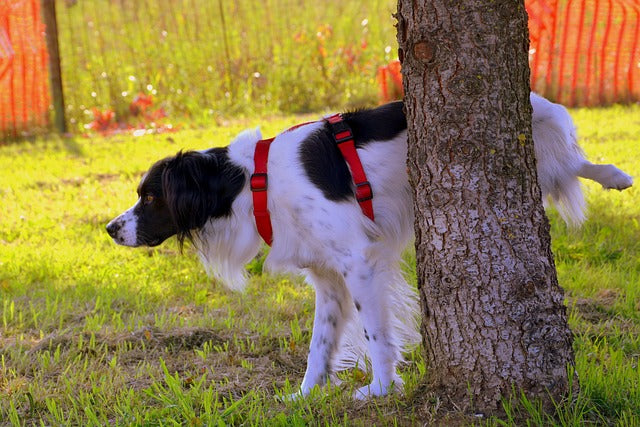
Urine Marking Vs. Peeing: What Is the Difference?
For pet owners, understanding the nuances of their dog's behavior is essential for a harmonious coexistence. Two behaviors that might seem similar but have distinct meanings are urine marking and peeing. While both involve the release of urine, they serve different purposes and are driven by different motivations. In this article, we'll delve into the differences between urine marking and peeing in dogs, helping you decode your pup's actions.
Urine Marking
Urine marking, often referred to as scent marking, is a behavior that involves a dog leaving small amounts of urine in specific areas to communicate information to other dogs. This behavior is more common in intact (unspayed or unneutered) dogs, but can also be observed in spayed/neutered dogs.
Motivation Behind Urine Marking
Urine marking serves several purposes for dogs:
-
Territorial Marking: Dogs mark to establish and communicate their territory to other dogs. This is especially prevalent in multi-dog households or in environments with other dogs.
-
Social Signaling: Dogs also use urine marking to leave information about their presence and status. It's like leaving a message saying, "I was here."
-
Hormonal Communication: Intact dogs mark to advertise their reproductive status to potential mates.
Characteristics of Urine Marking
Urine marking typically involves small amounts of urine deposited on vertical surfaces, such as walls, furniture legs, or tree trunks. Dogs may raise their leg or perform a similar posture to release the urine. The marking is often highly concentrated in terms of smell, making it easily detectable by other dogs.
Peeing
Peeing, on the other hand, is the act of a dog relieving themselves by emptying their bladder. This behavior is driven by the need to eliminate waste and maintain bodily comfort.
Motivation Behind Peeing
Peeing is primarily motivated by physiological necessity. Dogs pee to:
-
Eliminate Waste: Like any living being, dogs need to eliminate waste products from their bodies.
-
Maintain Comfort: Holding in urine for extended periods can cause discomfort and even health issues. Dogs pee to avoid discomfort and maintain their well-being.
Characteristics of Peeing
Peeing typically involves a larger volume of urine being released. Dogs usually squat with all four legs on the ground, and the urine is more evenly distributed, not concentrated for scent marking purposes.
Differentiating the Behaviors
While both urine marking and peeing involve the release of urine, here are some key differences to help you differentiate the behaviors:
-
Location: Urine marking is often targeted at specific vertical surfaces or objects to communicate with other dogs. Peeing is usually done in a more general area where the dog can comfortably relieve themselves.
-
Volume: Urine marking involves smaller amounts of urine, while peeing involves a larger volume to empty the bladder.
-
Frequency: Urine marking may occur in multiple spots to communicate territorial boundaries, while peeing typically occurs less frequently and is motivated by physiological need.
Conclusion
Understanding the distinction between urine marking and peeing is crucial for interpreting your dog's behavior accurately. Urine marking is a complex form of communication related to territory and social hierarchy, while peeing is a natural physiological process to eliminate waste. If you're concerned about excessive urine marking or inappropriate peeing, consult with a veterinarian or a professional dog behaviorist for guidance on managing and addressing these behaviors effectively.



